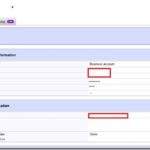For the purpose of this tutorial I am using a TP-Link TPTD-W8968 but the process should be similar for other TP link routers as well as other brands even.
Before I start, please ensure your router supports bandwidth control as not all do.
Bandwidth control allows the network administrator to limit the amount of download/upload speeds on a specific device. This is very handy if you’re using a shared network and a particular user or multiple users are slowing down your connection through heavy usage.
To allocate a minimum and maximum bandwidth for a particular device then you must first give it what is known as a static IP address. By doing this, then every time that particular device connects to your network then it will always have the same local IP address. Which means when your bandwidth control is configured, then that device will always have the limit you impose on it.
Right, let’s start with the basics.
How to Configure Router for Bandwidth Control
1. First ensure you are connected to your router, LAN or wifi is fine.
2. Now log into the router’s configuration page. For the TP Link TD-W8968 model it is 192.168.1.1 which is in fact probably the most common address for routers. (However, it does vary so check online or in your manual if this address did not work for you.)
3. Login to your router, default for TP Link TPTD-W8968 is username: admin password: admin. Again this is generally the same for a lot of routers where as the only difference I’ve come across is that the password is the word password.
4. Next I selected DEVICE INFO and looked at the DHCP info. Here I could find a list of devices connected to my network. Once on this page copy the MAC Address of the device AND the IP address assigned to it if you want to configure bandwidth control on it.
5. Here I selected Advanced Setup, followed by LAN setup/IPv4
PLEASE NOTE: THIS IS WHERE YOU ARE GOING TO ASSIGN A STATIC IP ADDRESS TO THE DEVICE ABOUT TO BE PUT UNDER BANDWIDTH CONTROL. THIS IS SO THE ROUTER CAN ALWAYS INDENTIFY THE PARTICULAR DEVICE EVEN AFTER IT HAS DISCONNECTED AND RECONNECTED. THE IP YOU ASSIGN WILL BE FOR THE DEVICE ONLY AND CANNOT BE USED BY ANY OTHER DEVICE.
In the LAN setup menu, you will see the DHCP Server settings. It will show a start and end IP address. You should only use an IP address in this range, but if you followed step 4 then you already have one chosen for it.
6. Now click ADD in in the Static IP section, then simply enter the MAC and IP addresses you selected in step 4. Then click SAVE/APPLY Now the device has a static IP meaning it will always have that IP address on your network.
7. Now keep a note of the IP and go to BANDWIDTH CONTROL, again in the Advanced setup menu.
8. Before you start you must enter the approximate Download and Upload speeds of your Internet connection. It’s ok to be under but if you set it higher than the actual connection then you will have problems.
9. Now in the Bandwidth control section select Rules List
10. Finally here are the settings:-
Rule Status Enable
IP Range STATIC IP ADDRESS for device in both boxes
Port range Leave blank
Protocol TCP/UDP
Priority Choose your own
Upstream choose minimum/maximum upload speed for that device
Downstream Choose minimum/maximum download speed for that device.
That’s it, your chosen device will now have the bandwidth restrictions you required which should in turn speed up your connection.
As I mentioned at the start of this post, this was for a TP-Link TPTD-W8968 but the procedure will be very similar on all routers that support bandwidth control.
Another thing worth mentioning and which will be easier to configure is to do a blanket minimum maximum speed to all devices on the network. To do this, then in the rules list put the whole range of the DHCP server (in the LAN settings) into the IP range box. Keep all other settings the same except in the upstream/downstream box enter an amount that equates to your maximum download and upload speeds.
For example, if you have a 20000Kb/s download speed and 10000Kb/s upload speed and 10 devices. Then you should have the setting on 2000Kb/s and 1000Kb/s.





